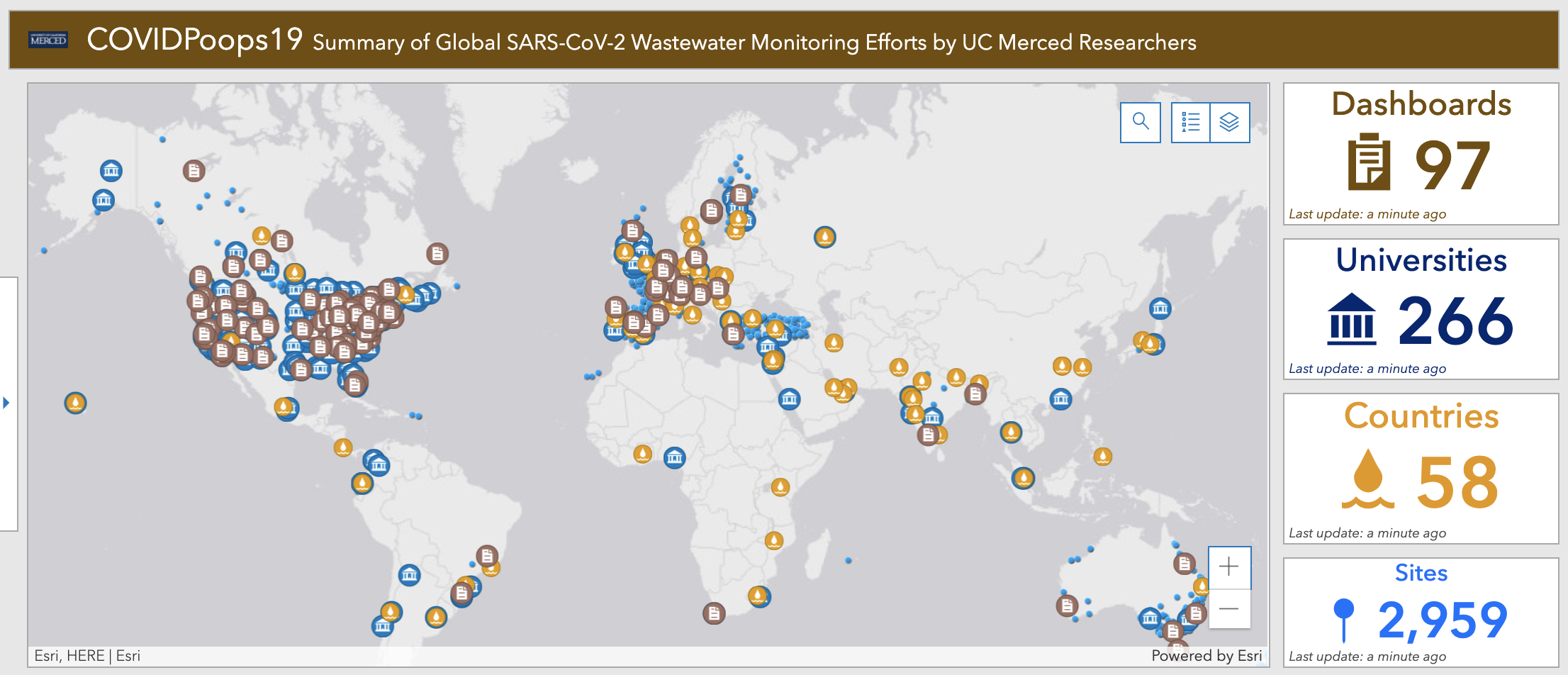
By Roni Gehlke, Clean Water Editor
Testing wastewater has been successful as a method for early detection of diseases such as polio and cholera as well as to monitor opioid use in communities, so it isn’t surprising that California wastewater agencies began testing for SARS-CoV-2 in 2019. Known as wastewater based epidemiology or WBE, this non-diagnostic testing has been useful for early detection and tracking of COVID-19 within small regions, cities, communities, universities, and even neighborhoods.
WBE is a process of testing for the genetic material of pathogens, which can be used as a biomarker for disease spread. Those who are infected with COVID shed the virus in stool and occasionally urine. It is believed that the viral ribonucleic acid (RNA) present in all living cells remains detectable in wastewater for a short time. Collecting samples at the source may even allow early detection of a SARS-CoV-2 outbreak before people decide to go to the doctor with symptoms.
The Centers for Disease Control (CDC) calls this process “surveillance sampling.” The organization advises that wastewater agencies follow a sampling strategy that includes three steps: identify public health data needs, including local epidemic and other available health indicators; assess wastewater sampling and testing capacity, being certain to include people with expertise in environmental microbiology and wastewater systems; and lastly, develop a sampling plan that addresses where to sample and how often, among other variables.
Some organizations are taking surveillance sampling a step further by developing a database to track those testing for the COVID virus. One such program is run through UC Merced, where in September 2020, School of Engineering professor Dr. Colleen Naughton and her students started a data program that searches for and allows wastewater agencies, scientists, universities, and others testing for the virus around the world to map their location. The dashboard is called COVIDPoops19.
“At the time of the first outbreak, I felt hopeless,” Naughton said. “I began working on an idea that would contribute by setting up a database of those who were tracking the pandemic through wastewater.”
With a background in civil engineering and wastewater, Naughton knew that there was an opportunity to test for SARS-CoV-2 through wastewater. The project grew as word got out that UC Merced was setting up a database on the web, and those testing realized the value of sharing information.
“Originally, the idea was to allow the data map as a resource for the general public,” she said. “However, the dashboard is a resourceful tool to researchers, as well.”
She explained that researchers could use the dashboard as a way to find and communicate with others in their regions that are also using WBE to test for the virus. She also said that the dashboard could be a handy tool for underserved communities with fewer resources, enabling them to communicate with others within close proximity that are testing.
A Twitter page, @COVIDPoops19, has also been created as an exchange to help share stories and information in real time about WBE programs throughout the world.
The web-based dashboard program received a grant from the Center for Information Technology Research in the Interest of Society (CITRIS) to help cover the cost of setup. Upon launching, 70 universities and 23 countries could be located on the site. At the beginning of August, the dashboard increased to 263 universities, 55 countries, and 2,302 sites.
Naughton hopes the COVIDPoop19 dashboard will continue to grow as more organizations work to track the virus through wastewater sampling. However, over the past several months, Naughton has seen that many smaller communities may not have access to testing wastewater. She believes that there is much to gain by providing resources to more communities to begin the WBE process.
“We can see that there are a lot of surges in cases of the virus in smaller and underserved communities throughout the world,” she said. “We see this in our own areas, as well.”
In early August, Naughton’s group in coordination with Michigan State University and other partners planned to launch a data center that will include WBE use case studies from different communities globally. Naughton has also partnered with Dr. Heather Bischel at UC Davis to expand wastewater testing in the Central Valley of California. She plans to work with the existing agencies in the area that are already testing and encourage other agencies to begin the process.
Naughton feels that this kind of research is essential because fewer people are getting tested for COVID-19 as time goes by. With new variants of the virus appearing as it evolves, the WBE process can become an essential tool for tracking the virus and ultimately ending it.To find the COVIDPoops19 dashboard go to https://arcg.is/1aummW. The Twitter site can be found at https://twitter.com/COVIDPoops19.